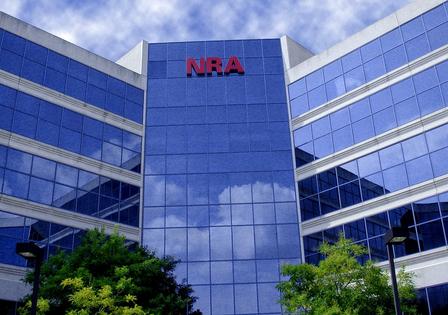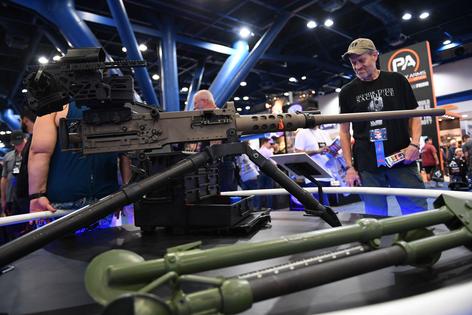NRA's path to recovery from financial woes leaves the gun group vulnerable to new problems
Published in News & Features
The National Rifle Association’s financial firepower, which arose in part due to its large and loyal membership base, has long been one of the gun group’s main sources of strength.
But the NRA has in recent years faced a financial tsunami, one that came to light after the 2016 election. A swirl of disagreements with longtime business partners, accusations of waste and misspending, ballooning debt and lawsuits from the New York and Washington, D.C. attorneys general have triggered one embarrassment after another. The NRA tried to declare bankruptcy to cushion some of these blows, with no luck.
At this point, the threat of being forced by the authorities to shut down due to alleged improprieties is minimal. But has the NRA managed to weather its financial storm?
As an accounting researcher who focuses on the financial performance of nonprofits, I have been closely studying NRA finances throughout its crisis. I can say the NRA financial picture is, as of early 2023, a mixed bag. The gun group has shored up its financial position over the last few years. However, the way in which that financial recovery came about risks hemorrhaging the NRA’s core supporters.
The NRA’s financial troubles arose at the same time that scandalous aspects of the organization’s woes – such as longtime NRA leader Wayne LaPierre’s free yacht getaways and luxury suit purchases billed to an NRA contractor – were drawing public attention.
Perhaps the best measure of a nonprofit’s financial health is its unrestricted net assets – the money at the organization’s disposal after leaving out amounts it has to spend on activities promised to donors and what it owes to others. A multimillion-dollar unrestricted net asset reserve for an organization the size of the NRA can provide financial security. On the other hand, a negative reserve is typically a sign of serious trouble.
The NRA’s reserve was negative at the end of 2017, with a deficit of more than US$30 million – a sure sign of the troubles already underway. Such a negative balance indicates that after satisfying donor promises, the organization owes more money to others than the value of its assets.
Things only got worse in the following two years, with the NRA approaching an unrestricted net asset deficit of nearly $50 million in 2019. This degree of weakness even led the organization to suggest that it risked imminent failure. However, there was time for a turnaround.
And that’s what happened. In 2020, the NRA slashed its unrestricted net asset deficit by over $38 million. Ironically, it was shortly after pulling off this marked improvement that it filed – unsuccessfully – for bankruptcy.
This financial resurgence continued in 2021, with the organization reporting it had eliminated its unrestricted net asset deficit, building up a surplus of over $10 million. When also including the money set aside for specific uses stipulated by donors – the group’s net assets – the NRA’s total available funds reached over $75 million.
These developments may seemingly bode well for the organization’s ability to withstand its continuing financial troubles. Below the surface, however, there’s an ominous trend.
How did the NRA get on a steadier financial footing?
It wasn’t through growth. NRA revenue declined in 2020 by 4% from $296 million to $284 million, even without taking inflation into account. Revenue fell another 18% to under $234 million in 2021.
Instead, it cut many core programs, including education and training, field services, law enforcement initiatives and recreational shooting.
Cost cutting can help stabilize faltering companies or nonprofits, depending on which costs they cut. The NRA’s over 4 million dues-paying members may tolerate lean spending only on certain things and only for so long. What the NRA spent on programs fell by $45 million – more than a 35% decline – in 2020. The organization was quick to attribute the change to the nation’s response to the COVID-19 pandemic.
However, program spending declined even further in 2021, when life had begun to return to normal, especially for gun enthusiasts. The NRA spent just $75 million on its programs in 2021, nearly $53 million less than it had two years earlier.
It didn’t cut all costs during these lean years.
Administrative spending in the “legal, audit and taxes” category skyrocketed, from just over $4 million in 2017 to almost $47 million in 2021. Much of this reflects the money NRA paid for its various legal entanglements, largely in fees to its new legal team.
What once was a member-focused organization has quickly become an organization whose primary growth area is legal fees.
Though the NRA apparently shored up its bottom line, its financial neglect of programs like firearms training, competitions and field services could ultimately disappoint its members and donors.
The organization has seen membership dues decline in the past several years, with a loss of more than 1 million members since the start of the crisis. I see a risk of a downward spiral: lower revenue, leading to less spending on programs, which leads to further declines in member dues, donations and so on.
The full NRA financial filing for 2022 is not yet available, but there are early signs that it may have been a turning point.
Journalist Stephen Gutowski has reported at The Reload that NRA membership declines meant that even with its more lean spending profile, the organization was poised to end 2022 at a loss.
I believe that with fewer members and fewer items left to cut, the NRA may take more drastic steps in the years ahead. And, with 2022 having been an election year – prime time for the NRA to take center stage – declining funds prevented an all-out political spending blitz.
Though it may once have seemed like the NRA would suddenly implode due to its weak finances, its decline today is more of a slow burn that’s diminishing its scale and threatens its future. The growth of other pro-gun groups, such as Gun Owners of America and the Second Amendment Foundation, poses further risks for a shrinking NRA.
In my view, the NRA’s risky strategy of cutting program costs while spending more on legal battles could portend a further and continued weakening of the organization in the years ahead.
This article is republished from The Conversation, an independent nonprofit news site dedicated to sharing ideas from academic experts. The Conversation is trustworthy news from experts, from an independent nonprofit. Try our free newsletters.
Read more:
The NRA declares bankruptcy: 5 questions answered
Judge rejects NRA’s bankruptcy bid, allowing New York’s lawsuit against the gun group to proceed: 5 questions answered
Brian Mittendorf does not work for, consult, own shares in or receive funding from any company or organization that would benefit from this article, and has disclosed no relevant affiliations beyond their academic appointment.











Comments